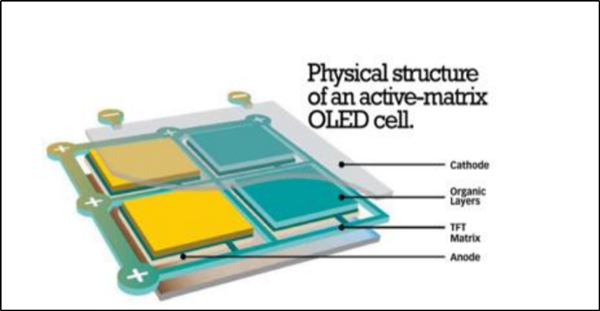AMOLED vs OLED vs LCD Display
The difference between AMOLED, OLED & LCD Display, in short, is that the evolution of Cathode-ray tube technology led to migration towards LCD technology. The major difference between LCD and OLED or AMOLED displays is that while LCD screens use background light to display the image, an AMOLED screen has its own source of light. AMOLED and Super AMOLED are used in Mobile devices and televisions. However AMOLED, Super AMOLED can be considered as a more advanced version that integrates touch-sensors. You must have seen an OLED display screen being widely used in commercial advertisements, sports venues, stock exchanges, etc. The same technology has become a standard feature of some of flagship Smartphones and tablets, as well as digital cameras and smart televisions. AMOLED and Super AMOLED are display technologies used in Mobile devices and televisions. These displays consist of a set of thin-film layers of electroluminescent (materials which emit light in response to the passage of an electric current) power-producing organic compounds and a pixel-modulating matrix. There’s not much difference between AMOLED and OLED. In fact, AMOLED Display is a variant OLED display technology. It stands for Active Matrix Organic Light Emitting Diode, also known as ‘Active Matrix OLED’ OLED. A typical AMOLED display is made up of a layer of organic materials situated between two electrodes, the Anode and Cathode, all deposited on a substrate. The organic layers measure about 100 to 500 nanometres thick which is equivalent to 200 times smaller than a human hair. In comparison to AMOLED, Super AMOLED can be considered as a more advanced version which integrates touch-sensors. These touch-sensors are integrated into the screen itself, instead of having them at the top of the screen. In addition to this, Super AMOLED has 20% brighter screen, 20% lower power consumption and 80% less sunlight reflection. AMOLED, on the other hand, has poor outdoor visibility (in the presence of direct sunlight) The evolution of Cathode-ray tube technology led to migration towards LCD technology or Liquid Crystal Display (LCD) technology. The major difference between LCD and OLED or AMOLED displays is that while LCD screens use background light to display the image, an AMOLED screen has its own source of light. Every AMOLED panel (screen) consists of a number of pixels. Each pixel represents a minute area of illumination on a display screen, one of many from which an image is composed. Each pixel emits its own “background light,” and thus it renders its light and color independently when activated electrically. A Thin Film Transistor (TFT) layer helps in controlling the light emitted by the OLEDsEach pixel.
Advantages and disadvantages of AMOLED Display
While there are many advantages of using AMOLED displays there also some inherent disadvantages. Here’s a breakdown of it! Advantages
AMOLED displays have a faster response time in comparison to LEDs and LCDs. No backlight is required. This makes the body slim compared to LCD screens.AMOLED Displays enable a greater artificial contrast ratio in purely dark conditions and have a better viewing angle compared to LCDs.
Disadvantages
The cost involved in producing an AMOLED Display is high. Also, the tech needed to develop AMOLED panels is very expensive.An AMOLED display has a very poor outdoor visibility. For example, it is difficult to view anything on an AMOLED panel in direct sunlight as there is no backlighting and reduced maximum brightness.A large variation in the lifespan of each color-specific organic material is seen. Red and green OLED films have longer lifespans compared to blue OLED films. This variation, over a period, results in color shifts as some pixels fade faster than the other pixels.
Advantages and Disadvantages of LCD Displays
LCD technology continues to evolve and change. Advantages
The biggest advantage of the LCD display is it is easy to dispose of.It has low flicker ratesCan be used in battery-powered electronicsIt is not affected by the magnetic fields (a major disadvantage seen in CRT displays)
Disadvantages
When viewing from different angles, the color and contrast appears inconsistentDue to brightness from backlighting, imagery may appear flatloss of contrast in high-temperature environmentsconsumes a lot of electricity which produce a lot of heat
For more information, read the PDF from ijser.org.

